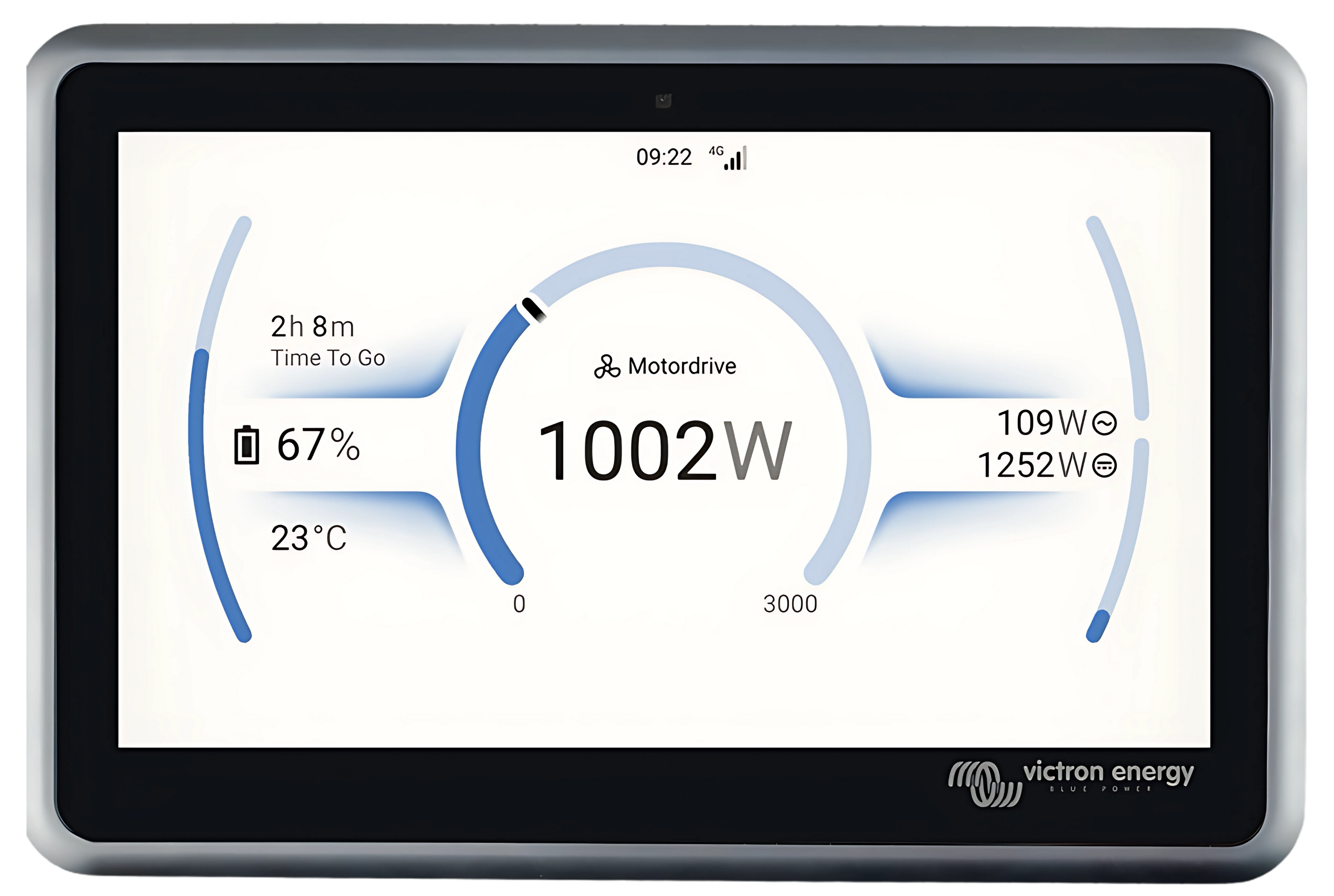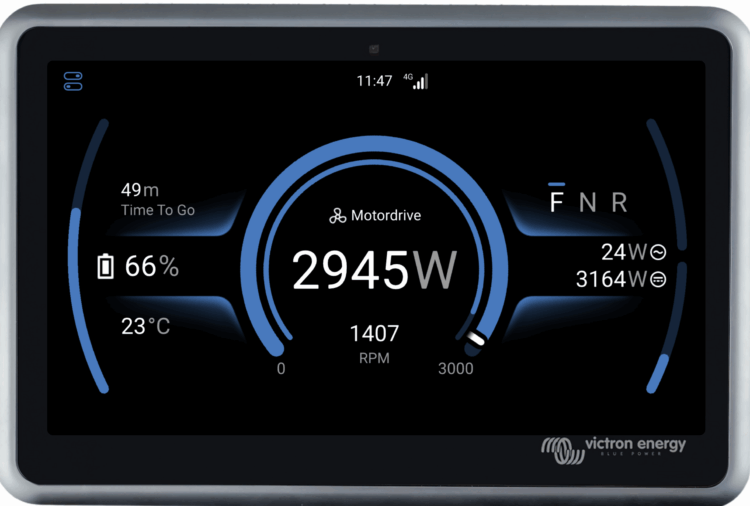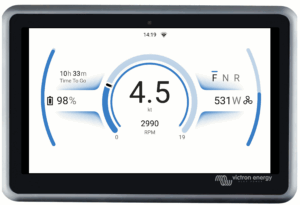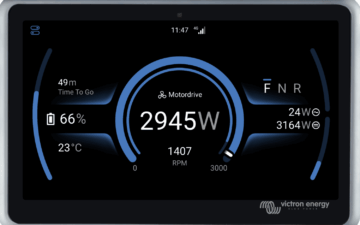
A few weeks ago, we introduced Venus OS v3.60 for our GX devices, which brings exciting new features developed especially with marine systems in mind. In this blog, we’d like to dive deeper into one of the key features of this update: the new GX Boat Page.
The GX Boat Page is a dedicated display designed for electric or hybrid boats, showing battery, engine RPM, and electric drive information all in one place. It is an additional page in the menu, next to the Brief and Overview pages in the Venus OS v3.60, which can be accessed remotely via VRM, or through a GX display.
The GX Boat Page displays data either through the NMEA2000 network, for integrated electric propulsion systems, or measured by a Victron SmartShunt. Whether your system uses NMEA 2000 or a Victron SmartShunt to provide battery and electric drive data, the GX Boat Page adjusts to the information available. Let’s take a closer look at these different configurations.
1. SmartShunt metering electric drive
The SmartShunt is one of our simplest yet most versatile products, and it works just as well in electric drives. When configured as a DC Energy Meter > Electric Drive, the GX Boat Page displays real-time drive power alongside battery state of charge, Time to Go, and AC/DC loads.

Boat page layout displaying SmartShunt metering, without GPS.
2. NMEA 2000-connected electric drive
If your electric propulsion system is connected via NMEA 2000, the GX Boat Page pulls additional data directly from the network. This includes gear position (Forward, Neutral, or Reverse) displayed on the right side of the page, and engine RPM at the bottom centre.

Boat page layout displaying NMEA 2000-connected electric drive, without GPS.
3. NMEA 2000-connected electric drive with GPS
When GPS data is available, the GX Boat Page adjusts to show boat speed in knots in the centre of the screen, with RPM displayed underneath and electric drive information on the right.

GX Boat Page layout displaying NMEA 2000-connected electric drive and GPS
How to integrate the GX Boat Page into your system

Integrating the GX Boat Page into your electric propulsion system is pretty straightforward. Here’s a quick overview of how it works:
GPS integration:
The GX Boat Page will display boat speed in knots if a GPS is connected via one of the following:
- A USB-connected GPS mouse
- NMEA 2000 network
- A Victron GX GSM device with additional external GPS antenna connected
Electric drive integration:
There are two main ways to get the electric drive data displayed on the GX Boat Page:
- Victron SmartShunt, configured in VictronConnect as DC Energy Meter > Electric Drive. This gives you real-time electric drive information, along with battery information.
- NMEA 2000-connected electric propulsion system, which will be automatically detected by the GX device to display all relevant information, including RPM and direction.
As a third option, you can create a custom integration using Node-RED. For example, you can build a Virtual Motordrive by feeding in data from various sources, allowing the GX device to simulate an electric propulsion system. You can also add third-party devices such as temperature sensors and bilge water level monitors, and build your own automations.
If you’d like to learn more about third-party integration options using Node-RED, have a look at our Software Integrator Program and connect with experienced Victron recommended software integrators who can help create custom solutions for your system.
More information
You can see the information on how to install Venus OS v3.60 in your GX device manual. Quick links to the relevant pages can be found here: Ekrano GX and Cerbo GX.
To learn about all the new features introduced in Venus OS v3.60, you can read this blog post and have a look at this slide deck.



